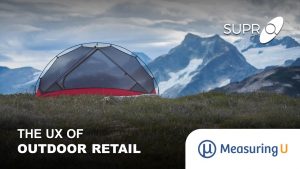
UX and Net Promoter Benchmarks of Mass Merchant Websites
With the COVID-19 pandemic’s effect on consumer shopping behavior (e.g., increased online shopping for delivery or contactless pickup), mass merchant revenues rose dramatically in 2020 and the first part of 2021. For example, Target reported a $15B sales growth in 2020, higher than its total sales growth over the past 11 years. For another example,








